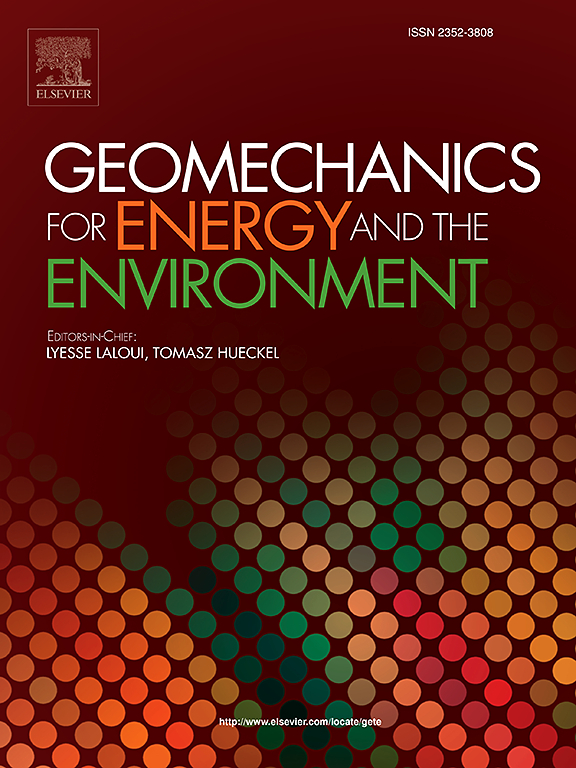光纤传感在实验室和野外地质力学中的应用综述
IF 3.7
2区 工程技术
Q3 ENERGY & FUELS
引用次数: 0
摘要
地质力学表征和监测对地下项目至关重要,包括地下采矿、地能源生产、地下水管理、二氧化碳和放射性废物的地质储存。传统的测量技术常常面临诸如有限的空间覆盖和高昂的操作成本等挑战。光纤传感(FOS)由于其可扩展性,耐用性和高空间分辨率而提供了一个有前途的替代方案,使其特别适合恶劣环境和大规模应用。本文对FOS在地质力学中的应用进行了全面而批判性的回顾,涵盖了准分布式和全分布式传感的原理,并重点介绍了实验室和现场环境中的应变测量。我们讨论了光纤电缆安装的各种技术,并探讨了FOS与其他地质力学监测技术的集成。基于所回顾的研究中发现的挑战,我们得出结论,需要改进光纤耦合和测量校正,高效的光纤电缆安装,强大的数据处理和解释,以及不同地质力学应用的标准化。本文章由计算机程序翻译,如有差异,请以英文原文为准。
A review of fiber optic sensing in geomechanical applications at laboratory and field scales
Geomechanical characterization and monitoring are essential for subsurface projects, including underground mining, geo-energy production, groundwater management, and geological storages of CO2 and radioactive waste. Traditional measurement techniques often face challenges such as limited spatial coverage and high operational costs. Fiber optic sensing (FOS) offers a promising alternative due to its scalability, durability, and high spatial resolution, making it particularly suitable for harsh environments and large-scale applications. This paper provides a comprehensive and critical review of the use of FOS in geomechanics, covering the principles of quasi- and fully distributed sensing and focusing on strain measurement in both laboratory and field settings. We discuss various techniques for fiber cable installation and explore the integration of FOS with other geomechanical monitoring techniques. Based on the challenges identified in the reviewed studies, we conclude that there is a need for improved fiber coupling and measurement corrections, efficient fiber cable installation, robust data handling and interpretation, and standardization across different geomechanical applications.
求助全文
通过发布文献求助,成功后即可免费获取论文全文。
去求助
来源期刊

Geomechanics for Energy and the Environment
Earth and Planetary Sciences-Geotechnical Engineering and Engineering Geology
CiteScore
5.90
自引率
11.80%
发文量
87
期刊介绍:
The aim of the Journal is to publish research results of the highest quality and of lasting importance on the subject of geomechanics, with the focus on applications to geological energy production and storage, and the interaction of soils and rocks with the natural and engineered environment. Special attention is given to concepts and developments of new energy geotechnologies that comprise intrinsic mechanisms protecting the environment against a potential engineering induced damage, hence warranting sustainable usage of energy resources.
The scope of the journal is broad, including fundamental concepts in geomechanics and mechanics of porous media, the experiments and analysis of novel phenomena and applications. Of special interest are issues resulting from coupling of particular physics, chemistry and biology of external forcings, as well as of pore fluid/gas and minerals to the solid mechanics of the medium skeleton and pore fluid mechanics. The multi-scale and inter-scale interactions between the phenomena and the behavior representations are also of particular interest. Contributions to general theoretical approach to these issues, but of potential reference to geomechanics in its context of energy and the environment are also most welcome.
 求助内容:
求助内容: 应助结果提醒方式:
应助结果提醒方式:


